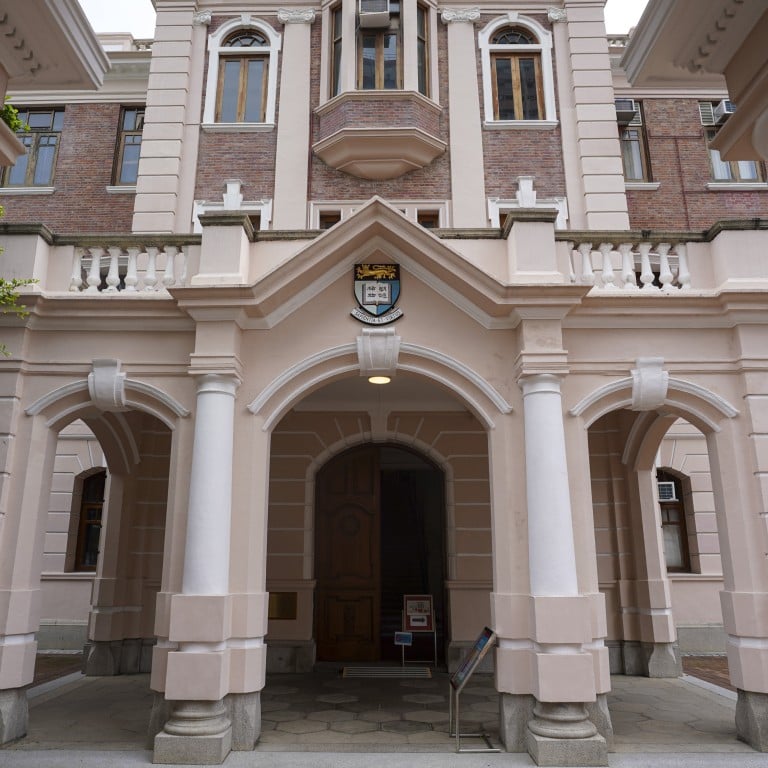
Why Hong Kong’s ceilings used to be much higher, and how ones of galvanised iron sheets were once a hot interior design trend
- In most pre-war Hong Kong buildings, ceilings are much higher than in modern structures – three metres or more is not uncommon, even in residential properties
- The pressed-metal ceiling was an interior design trend in the 19th century – an example can still be seen at Loke Yew Hall at the University of Hong Kong
Throughout history, ceilings were as important to a building’s decorative style as floors and walls.
As superbly detailed Byzantine mosaics, intricate Jacobean wood carving and panelling, and exquisitely carved plasterwork combined with trompe l’oeil paintings attest, ceilings often merited more concentrated attention than the rest of a room.
Practical considerations played a role; unlike floors, which would inevitably wear down in areas of heavy traffic, or walls that would get scuffed or become discoloured from fireplace smoke, ceilings did not suffer from careless wear and tear.
Next time you walk into an old building, look up at the ceiling. In most pre-war Hong Kong buildings, ceilings are much higher than in contemporary structures; even in residential buildings, three metres (10 feet) or more is not uncommon.
How Hong Kong kept cool before air conditioning – by copying India
With several months of unrelenting summer heat, monsoon rains and periodic typhoon conditions in mind, this soaring design feature was intentional; in the days before the widespread introduction of air conditioning, or even mechanical cooling systems such as fans, high ceilings helped upwardly disperse gathered heat in a room, and encouraged draughts and cross ventilation – all essential for comfort in a subtropical climate.
With the exception of cavernous banking halls and hotel lobbies, most modern buildings, in stark contrast, have low ceilings explicitly designed with air conditioning foremost in architects’ minds.
Underneath, electrical wires, piping, ducts and drains are concealed by easily removed insulating battens, which ensure that most modern ceilings are plain and unremarkable – an obvious distinction from those of earlier times.
From the late 19th century, as mass-produced domestic fittings were popularised in Britain, Europe and North America, and then exported globally, commercial and domestic interiors in Hong Kong began to see examples of the same manufactured items found everywhere from Manchester to Melbourne.
How Hong Kong’s New Territories offered unique attractions a century ago
The pressed-metal ceiling is one such example. Just how this interior design trend came about locally, and the imported material that was used to create it, explains how local climatic and market conditions can generate unexpected business opportunities.
Henry Robinson Palmer, an engineer with the London Dock Company, was granted a patent in 1829 for the mechanical process that resulted in galvanised iron sheeting. Within decades, British steel mills had perfected the rolling process to any required thickness.
The popularity of this material, which was lightweight, durable, relatively inexpensive and easy to transport, spread rapidly throughout British territories overseas and it became particularly useful in hot, dry climates, such as in Australia, India and East and Southern Africa, where termites and other destructive insect pests were prevalent.
Another readily transported item – a specially modified, hand-operated mangle – could quickly transform these flat sheets into a building material characteristic of these locations: corrugated-iron sheeting.
Political graffiti in Hong Kong: cynical vandalism or historical record?
Used for roofing material (and even walls, in some places) corrugated iron, which was usually coated with forms of rustproof paint, can still be seen everywhere from Queensland to Kenya.
But in Hong Kong – with the exception of military-use Nissen huts, which can still be seen in local army camps, mostly in the New Territories – corrugated iron never became a popular building material, mainly because it is highly susceptible to typhoon conditions.
When ripped loose by gale-force winds, flying sheets can be lethal in densely crowded urban areas. Nevertheless, galvanised iron sheets were imported in large quantities and used for another innovation – pressed-metal ceilings.
The same mangles used to produce corrugations could also be fitted with a variety of die-stamped moulds, which – when attached to the mangle’s rollers – would produce patterned sheet metal that could be affixed to the ceiling.
When ropes tied Hong Kong and the Philippines together economically
Elaborate cornices, decoratively shaped fixtures for pendant light fittings or electric ceiling fans could also be pressed out, cut to measure, soldered together, and then painted.
A few local examples – such as at Loke Yew Hall in the University of Hong Kong’s Main Building, built in 1910-12 – can still be seen.

